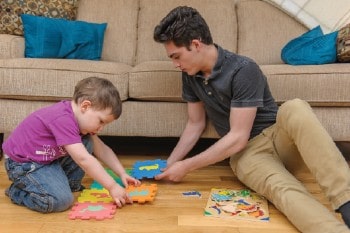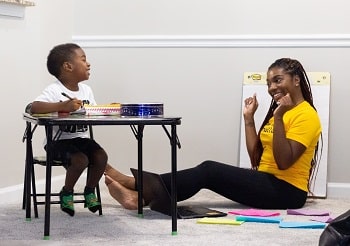We all know what we’re seeing in the news can be worrisome – even, at times, frightening. If we’re feeling worried or alarmed about what we’re seeing in the news as adults, imagine what kids and youth may be thinking.
 Here are some tips for talking with children and youth about distressing or traumatic events in the news:
Here are some tips for talking with children and youth about distressing or traumatic events in the news:
- Take the lead and stay calm. As parents and caregivers, the best first step is to stay calm and prepare yourself to chat with your child. Creating a safe environment to have these discussions, and to welcome questions, is important.
- Limit their exposure to media: Children and youth are exposed to all kinds of overwhelming and often distressing information through multiple channels like social media, TV, and radio. Try to make sure you are with them when they are watching or reading the news. If the news story is receiving wide coverage, they will likely hear about it from friends or classmates, so make time to talk with your children about the events, provide facts and create a safe space to discuss how they are feeling.
- Normalize their reactions: Some level of anxiety or fear is expected in response to news that can be scary for young children and teens. Reassure children that these uncomfortable feelings are normal. By helping children to find ways of communicating these feelings, future reactions to similar events may be processed more easily.
- Put it into context: Many young people will assume scary events happening will happen to them as well. It’s important to convey security, dispel myths or rumours they may have heard by providing facts about it (which are usually less scary than what they have heard).
- Answer questions: Some questions may be hard, such as why did the frightening event happen? It’s okay to say, “I don’t know,” but it’s important to limit use of terms such as “bad guys” or “evil people,” which can increase fear in children. Instead try explaining that some people are in pain, angry or make bad choices.
- Take positive actions: This may be a chance to do something to counteract the frightening event in the news. Perhaps make a donation to a relevant cause or write to an elected official – taking action will give children a sense of purpose or involvement in change and can help reduce their anxiety. Plan activities your child or teen likes to do to help them stay calm, like reading bookings, being creative, playing outdoors and other stress-busters that have worked for them in the past.
Keep in mind that no one knows your child as well as you do; family is the most important support network for children. Everyone reacts to these events differently and recovers in their own unique way.
Taking the time to talk
Spend time talking with your children. This will let them know that it is OK to ask questions and to express their concerns. Because emergencies can bring about change, children may have questions on more than one occasion.
 Issues may need to be discussed more than once. You should remain flexible and open to answering repeated and new questions and providing clarifications. When responding to these questions, reassure children that they are safe. Try to answer questions briefly and honestly, but also ask your children for their opinions and ideas about what is discussed.
Issues may need to be discussed more than once. You should remain flexible and open to answering repeated and new questions and providing clarifications. When responding to these questions, reassure children that they are safe. Try to answer questions briefly and honestly, but also ask your children for their opinions and ideas about what is discussed.
For younger children, try to follow these conversations with a favourite story or a family activity to help them feel safer and calmer. Look for shows or books where characters may be experiencing similar feelings to your child and help them make connections to their own experiences. Ask questions like: Have you ever felt anything like that? How did the character deal with that feeling? Did it work? What other things do you think they could have done?
The Canadian Red Cross also offers resources for parents seeking support when coping with crisis. You might also visit a doctor or other health professional if you are concerned about someone in your care; don’t wait to seek help.
Assure your child that there are people who help and care for others, regardless of how it had affected them. Talking about helpers can help add a positive perspective to the event.
Read about our Helping hands of 2020 to see 10 inspiring stories of Canadians stepping up to help others in scary times.
Looking for more information? Visit COVID-19 resources: Self-care, working from home, and tips for parents.
Related stories:

